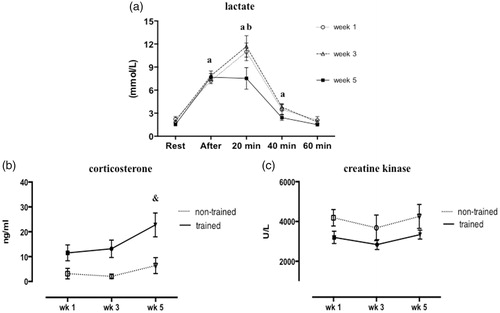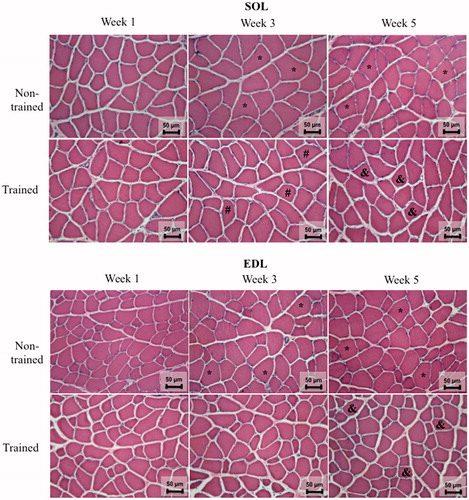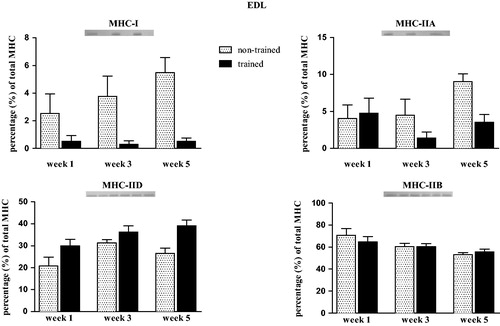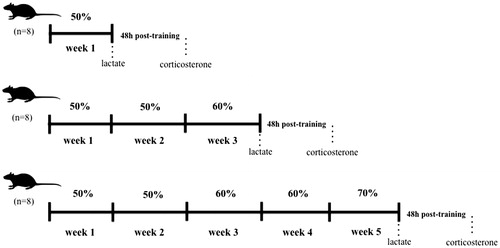Figures & data
Table 1. Jump-training protocol.
Figure 2. Circulating lactate concentration measured at rest, immediately after, 20, 40, and 60 min post-training of trained rats (a). Plasma corticosterone concentrations (b) and creatine kinase activity (c) in non-trained and trained rats after 1, 3, or 5 weeks. Values are expressed as mean ± SEM. One-way ANOVA followed by Tukey’s post-test (p < .05): avs. previous time of lactate measurement; bvs. week 5; &vs. week 5 of non-trained group. n = 8/group.

Table 2. Body weight, absolute (MW) and relative (MW/BW) weights of soleus and extensor digitorum longus (EDL) muscles of non-trained and trained rats after 1, 3, or 5 weeks.
Figure 3. Images of soleus (SOL) and extensor digitorum longus (EDL) muscles stained with hematoxylin and eosin (H&E) after 1, 3, or 5 weeks of the experimental period. Representative images were taken at 40x magnification. Groups: non-trained and trained rats. *vs. week 1 of the same group; #vs. week 3 of non-trained group; &vs. week 5 of non-trained group. n = 8/group.

Table 3. Cross-sectional area (CSA) of soleus and extensor digitorum longus (EDL) muscles of non-trained and trained rats after 1, 3, or 5 weeks.
Figure 4. Relative myosin heavy chain (MHC) isoform distribution of MHC-I (a) and MHC-IIA (b) in soleus (SOL) muscle of non-trained and trained rats after 1, 3, or 5 weeks. Values are expressed as means ± SEM. One-way ANOVA followed by Tukey’s post-test (p < .05): &vs. week 5 of non-trained group. n = 8/group.

Figure 5. Relative myosin heavy chain (MHC) isoform expression of MHC-I (a), MHC-IIA (b), MHC-IID (c) and MHC-IIB (d) in extensor digitorum longus (EDL) muscle of non-trained and trained rats after 1, 3, or 5 weeks. Values are expressed as means ± SEM. No statistically significant differences: Kruskal–Wallis (p > .05). n = 8/group.


